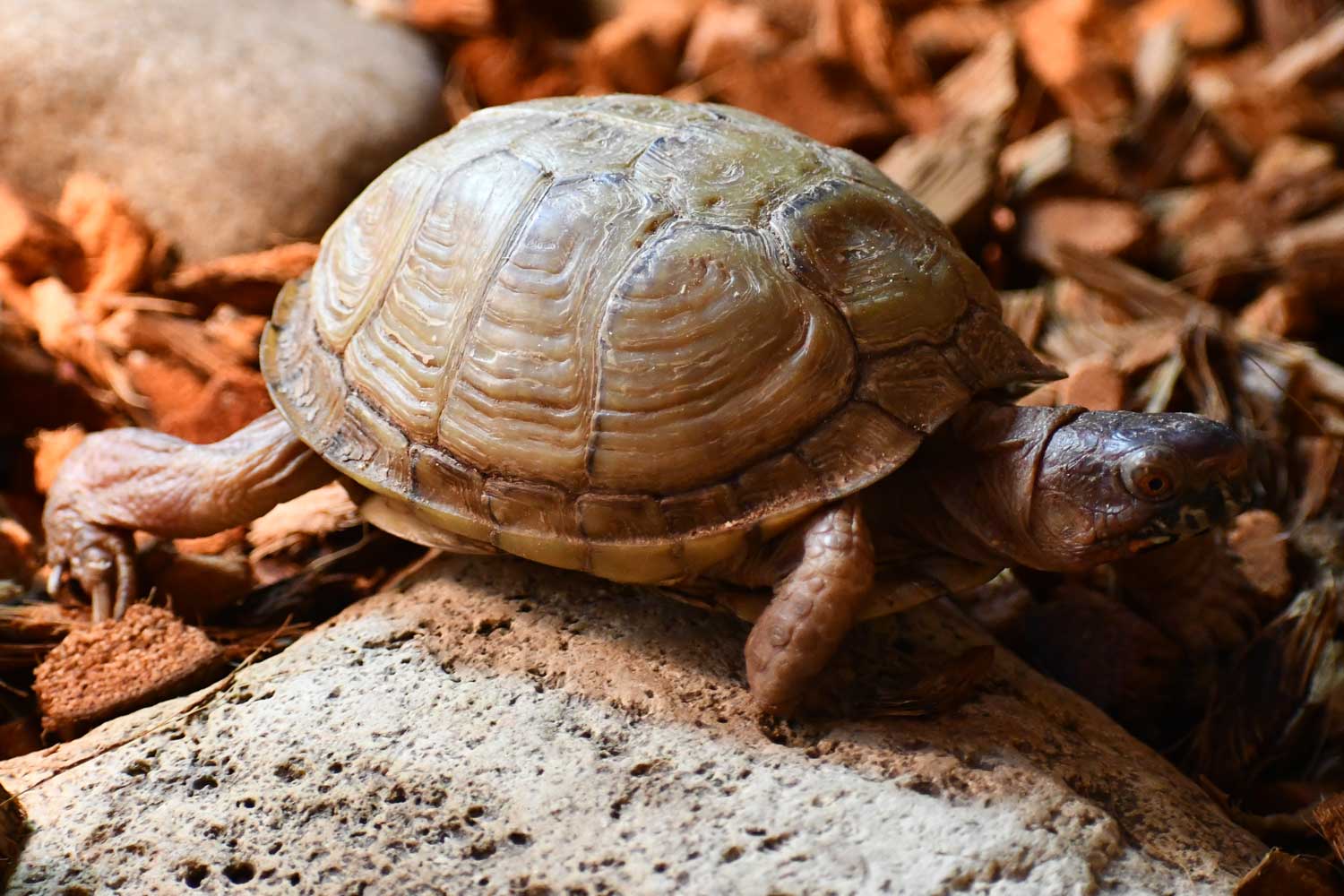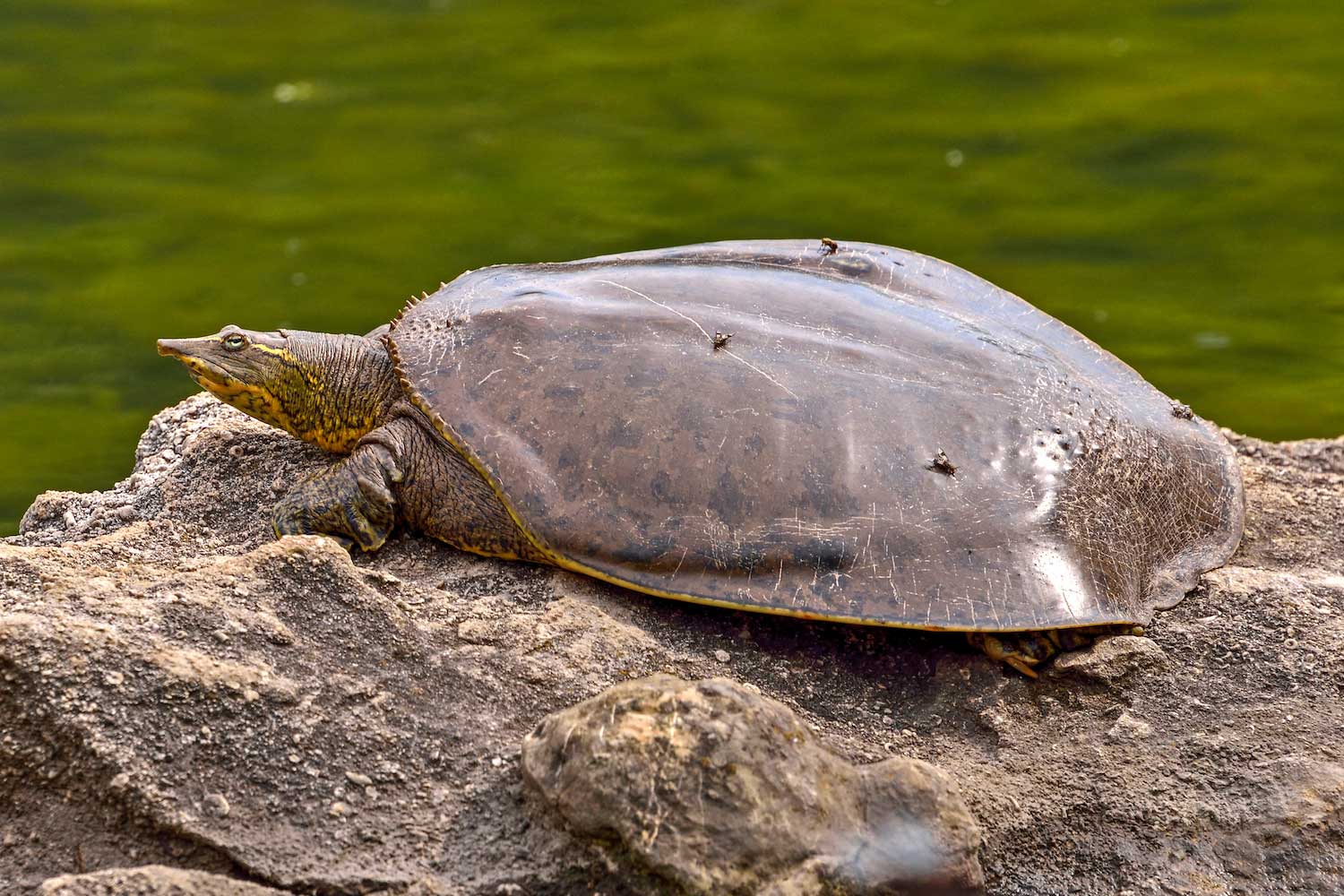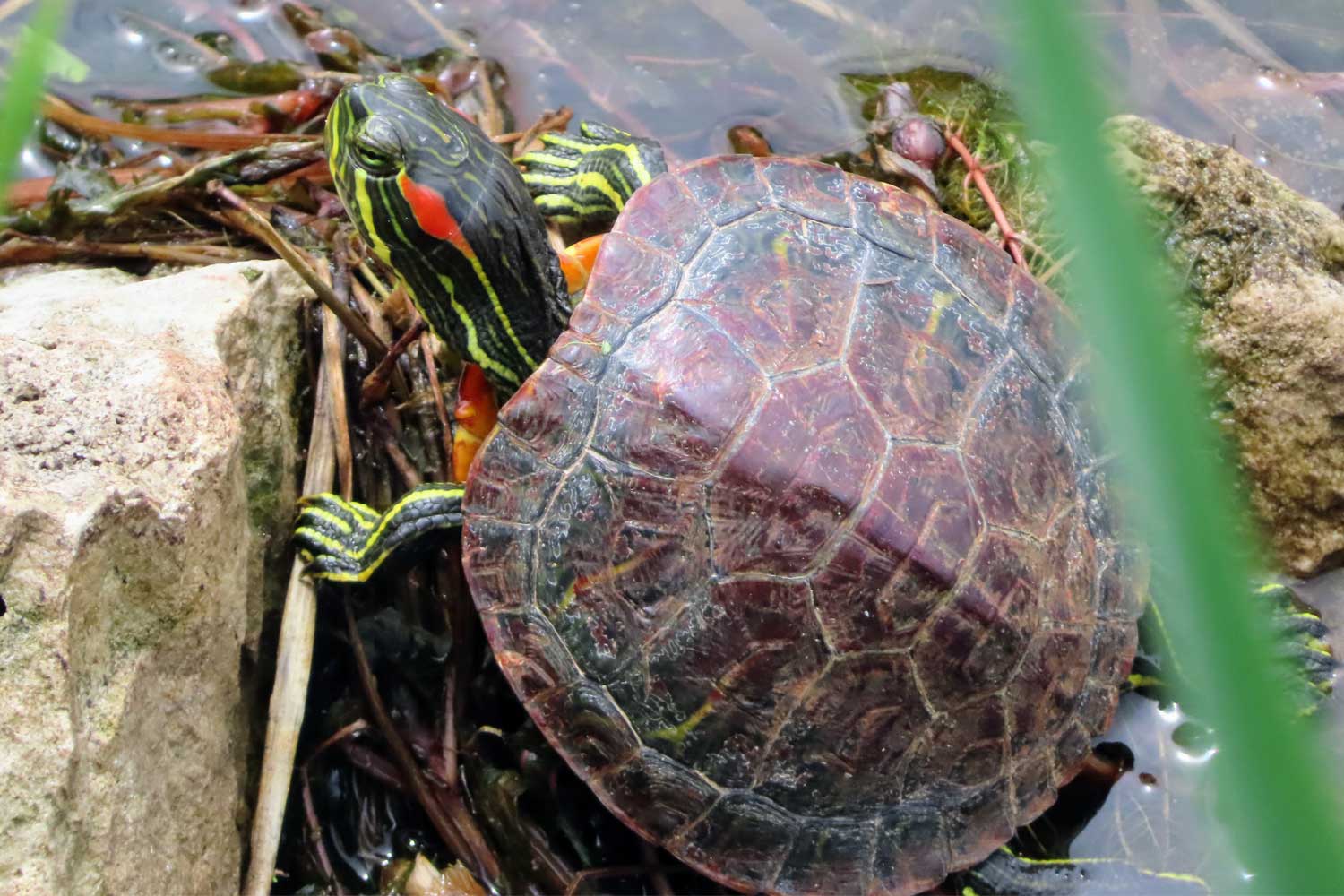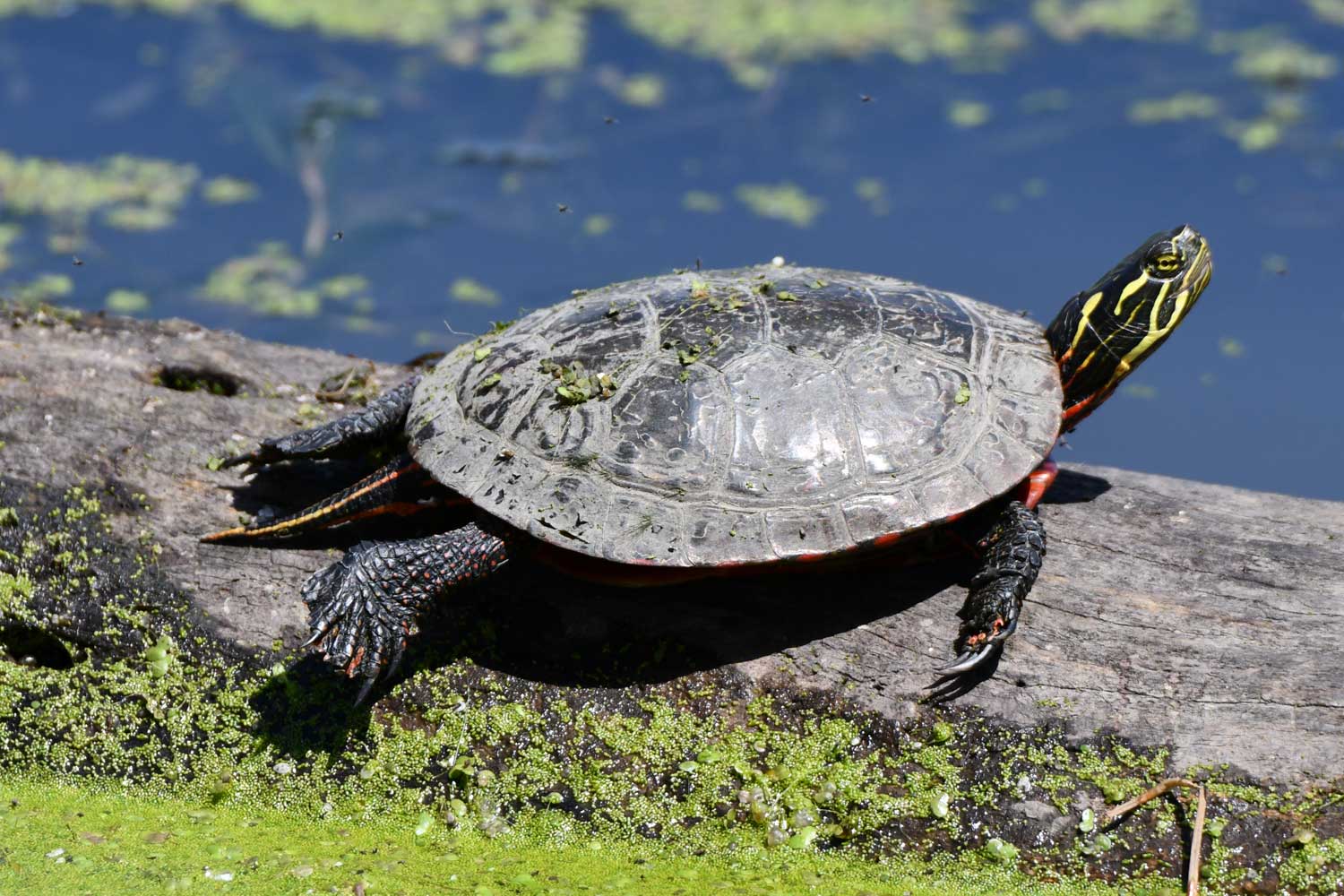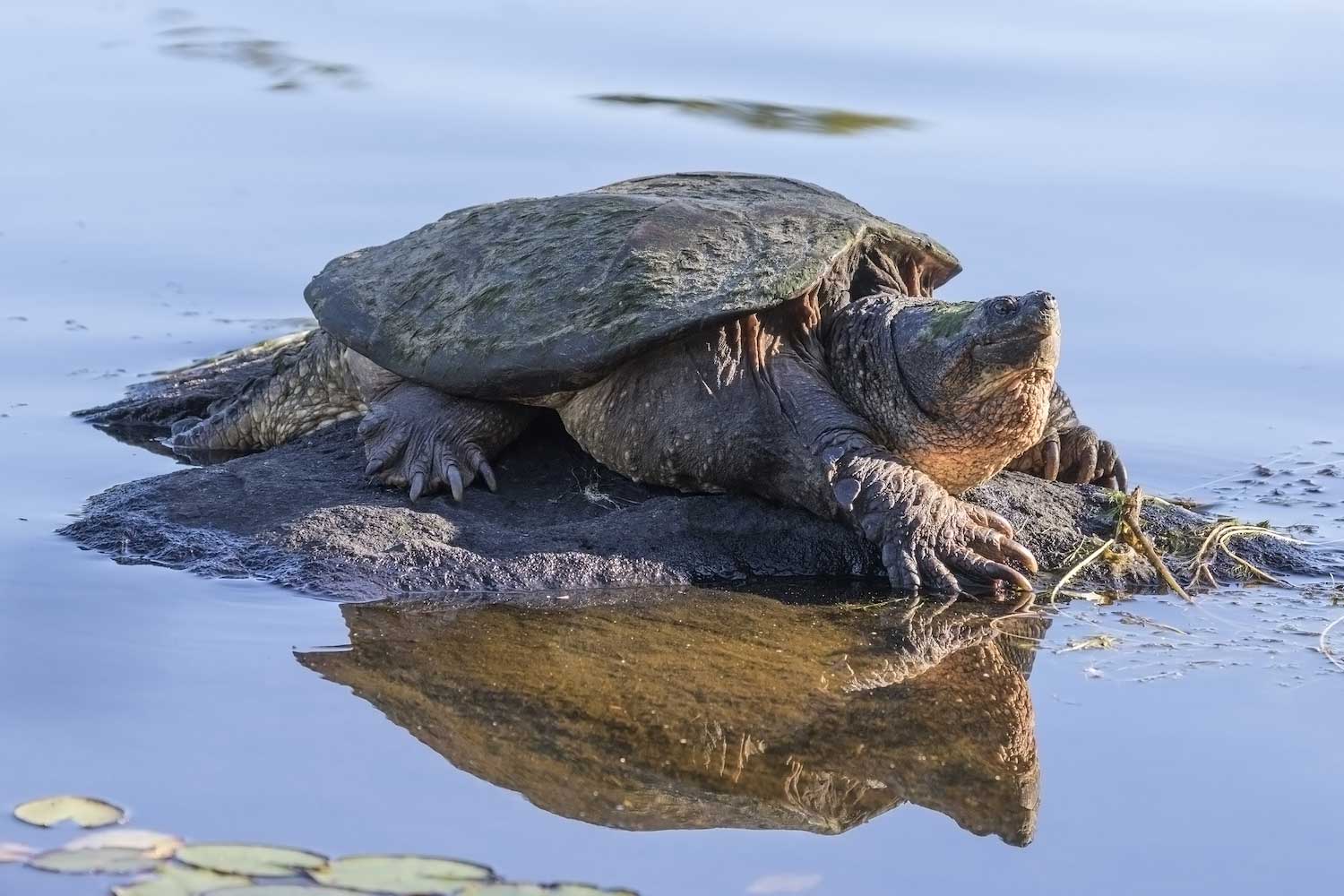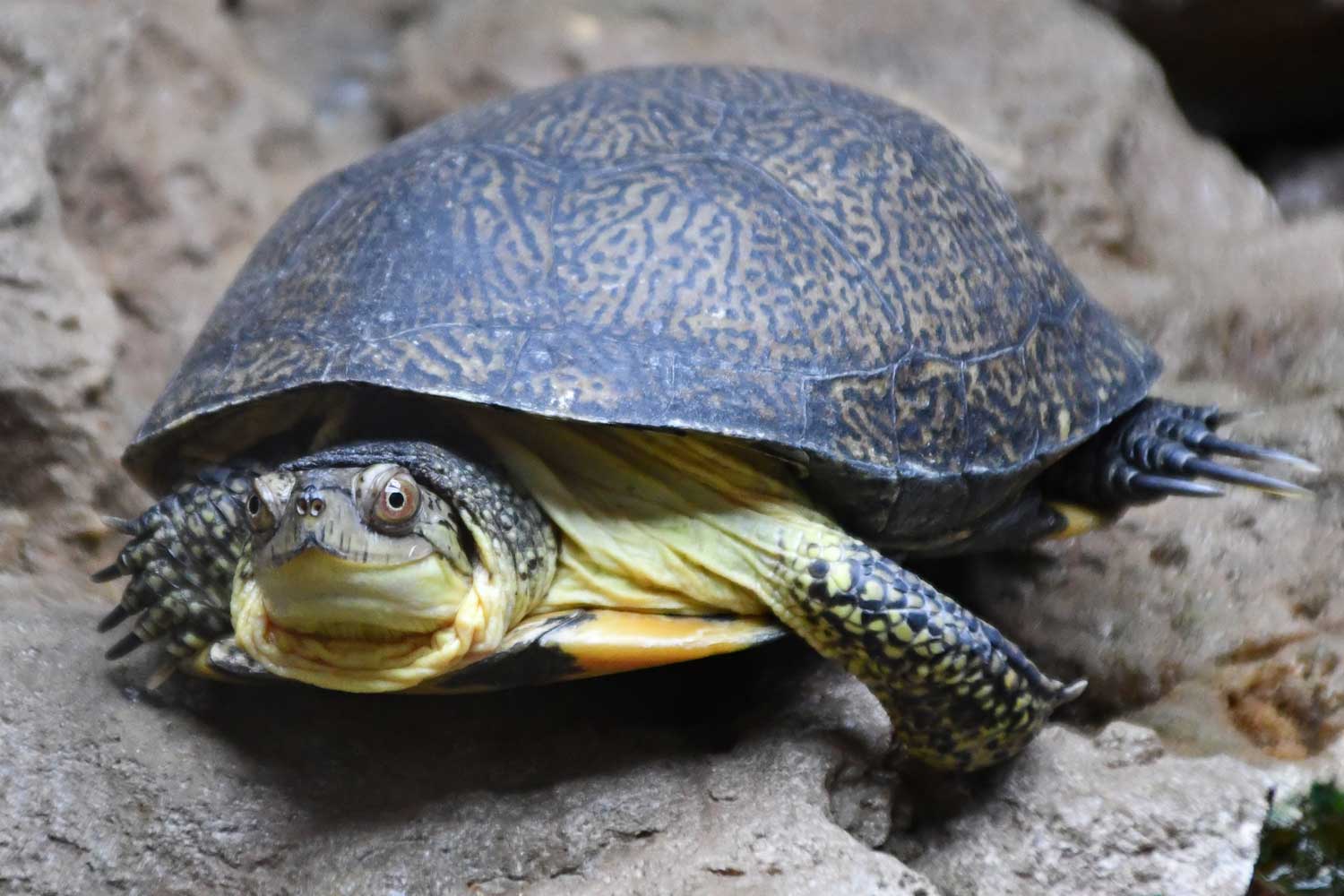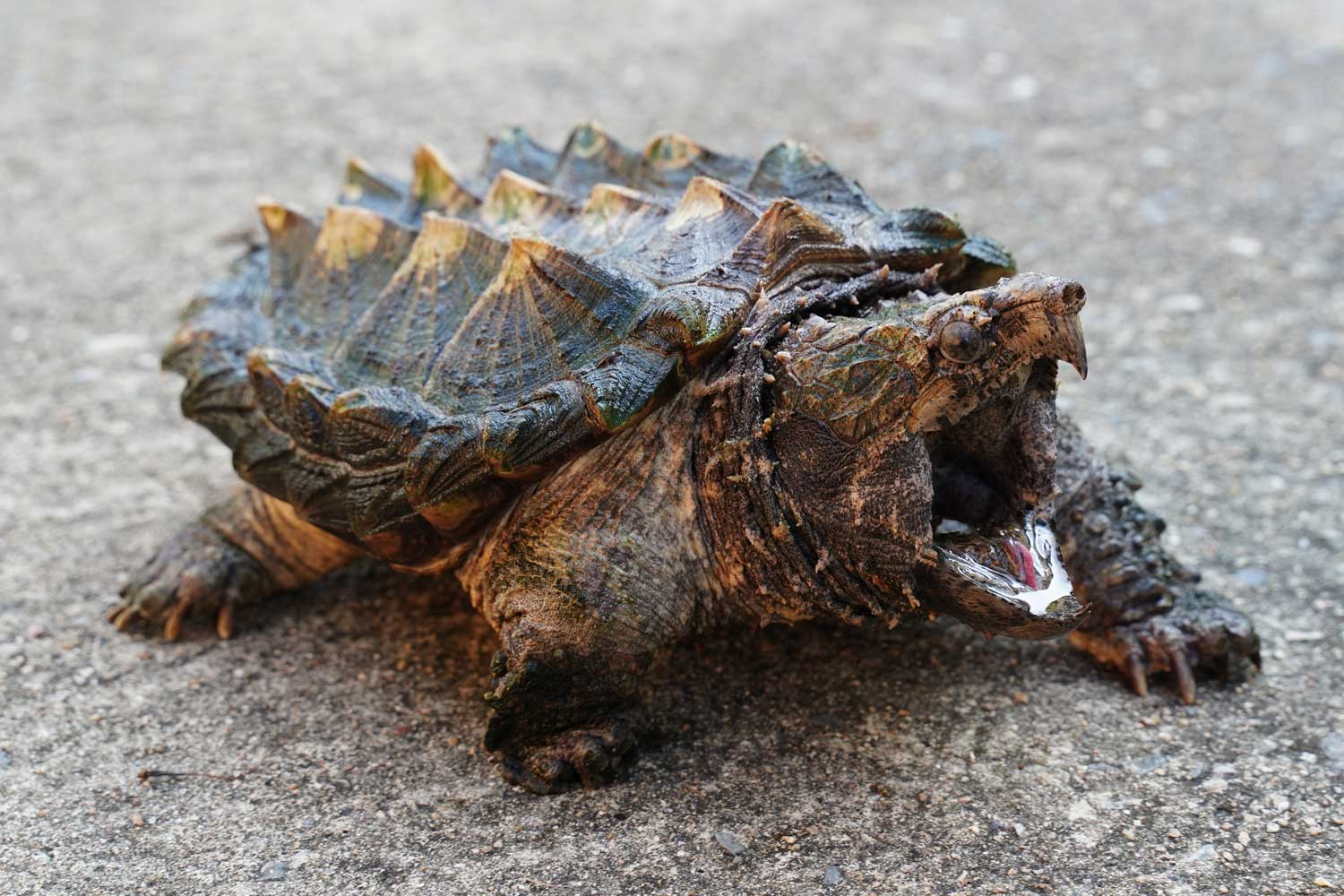Nature curiosity: Why and how do turtles breathe with their butts?
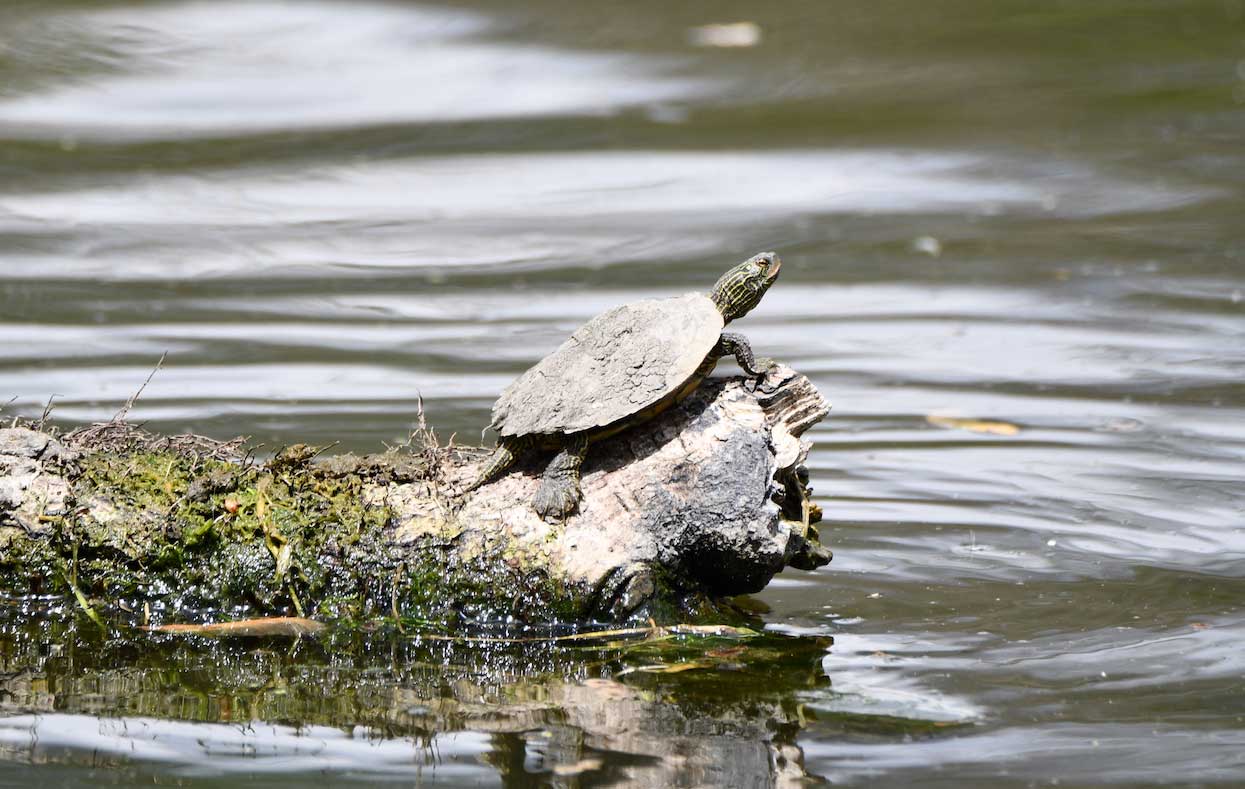
As winter sets in and ice starts to cover our lakes and ponds, you may wonder what happens to all the animals living in the water. How do they survive?
Many of the aquatic turtles that live in northern Illinois spend the entire winter submerged underwater, but they are still able to get oxygen. Their ability to "breathe" underwater is because of how their metabolism is affected by their body temperature, according to PBS News Hour.
Like all reptiles, turtles are ectotherms, or cold-blooded, which means their body temperature is determined by their environment. If the water they are in is 60 degrees F, their body temperature is 60 degrees F. If the water is 32 degrees F, their body temperature is 32 degrees F.
Compare this to humans and most other mammals, which are endotherms, or warm-blooded, meaning their metabolism allows them to maintain a steady body temperature regardless of the temperature of their environment. For example, humans usually maintain a body temperature of about 98.6 degrees F, while a horse typically maintains a body temperature between 99 degrees F and 101 degrees F.
For turtles, their body temperature determines the rate of their metabolism, PBS News Hour reports. As it gets colder and their body temperature drops, so, too, does their metabolism. This means their heart rate and respiration rate drops, and they require less energy and oxygen to survive.
In the cold of winter, turtles enter a state of brumation. Brumation is essentially the same as hibernation, but reptiles brumate while mammals hibernate.
During brumation, turtles don't require much oxygen, but what they need they can't get by breathing like they do in the warmer parts of the year, according to the McGill University Office of Science and Society. Instead, they use another form of respiration, which is kind of like breathing through their butts.
The technical term for this butt-breathing is cloacal respiration, and it's not quite like the breathing you do, or even like turtles do when they are above water, the university Office of Science and Society reports.
Through cloacal respiration, turtles get oxygen from the water by moving the water over their body surfaces covered in blood vessels. Turtles have a cloaca, which is essentially their butt, that has a lot of blood vessels, so the most efficient way to get oxygen is through the cloaca, hence the term cloacal respiration.
Turtles aren't the only butt breathers in the animal kingdom; it's fairly common among reptiles and amphibians, according to McGill University. Other well-known butt breathers include frogs and salamanders.
